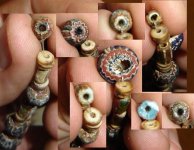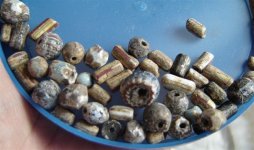uniface
Silver Member
Columbus had recounted how peaceful Arawaks in modern-day Bahamas were terrorized by pillagers he mistakenly described as "Caniba," the Asiatic subjects of the Grand Khan. His Spanish successors corrected the name to "Caribe" a few decades later, but the similar-sounding names led most archaeologists to chalk up the references to a mix-up: How could Caribs have been in the Bahamas when their closest outpost was nearly 1,000 miles to the south?
But skulls reveal the Carib presence in the Caribbean was far more prominent than previously thought, giving credence to Columbus' claims.
Face to face with the Caribbean's earliest inhabitants
Previous studies relied on artifacts such as tools and pottery to trace the geographical origin and movement of people through the Caribbean over time. Adding a biological component brings the region's history into sharper focus, said Ann Ross, a professor of biological sciences at North Carolina State University and the study's lead author.
Ross used 3D facial "landmarks," such as the size of an eye socket or length of a nose, to analyze more than 100 skulls dating from about A.D. 800 to 1542. These landmarks can act as a genetic proxy for determining how closely people are related to one another.
The analysis not only revealed three distinct Caribbean people groups, but also their migration routes, which was "really stunning," Ross said.
https://www.sott.net/article/427167...th-America-not-a-myth-but-were-they-cannibals
Amazon Forum Fav 👍
Upvote
0









